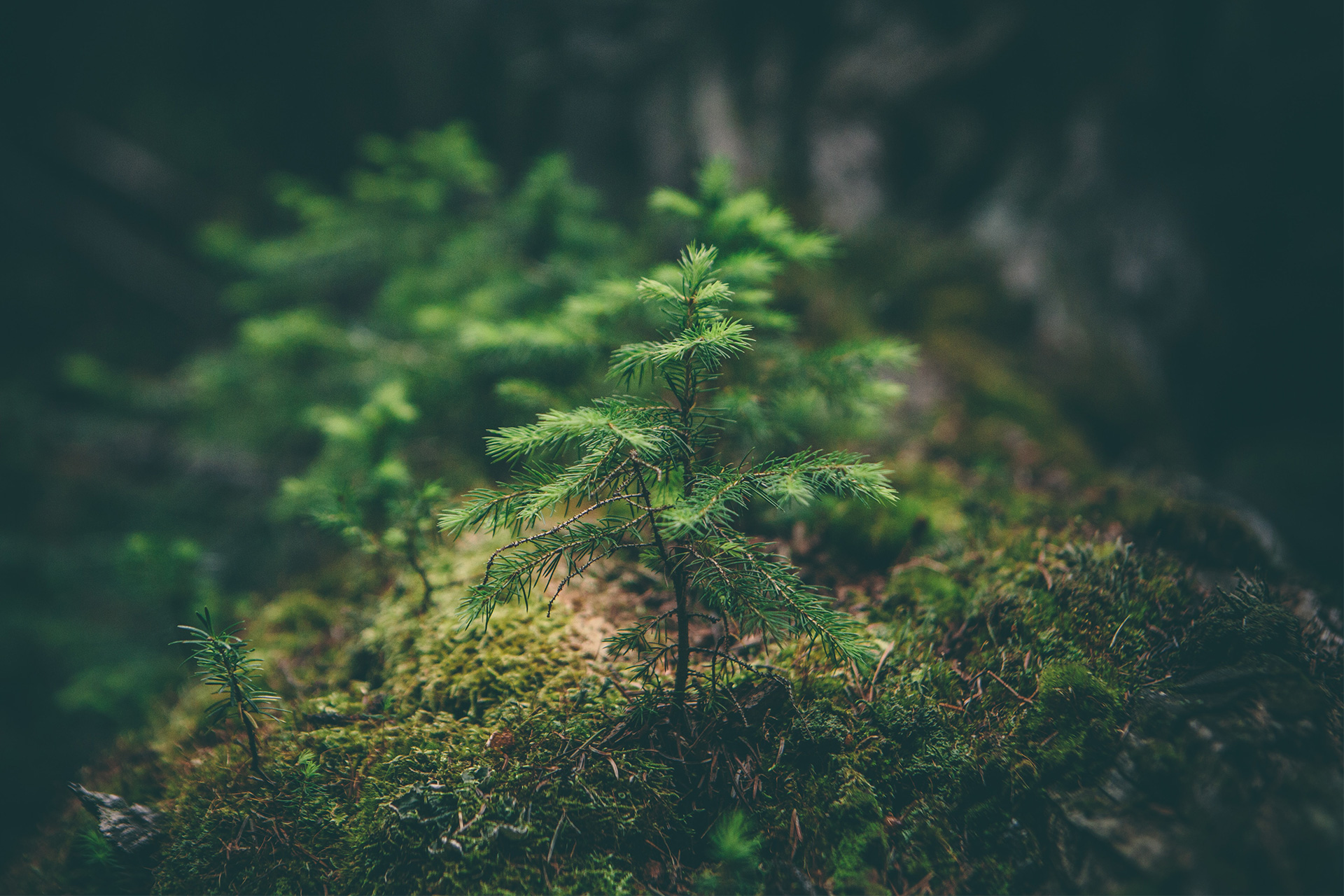
From plant to plank
Making the most of the forest’s precious resources
Published: 2022-05-13
To ensure that our forests will thrive for generations to come we always assess how to achieve as little waste as possible and make the absolute most of the raw materials from each felled tree. We choose only the best plants for each planting site, which are then carefully maintained by clearing and thinning until it is time for the trees to be felled. At an early stage we select the trees that will eventually become wood products, as well as those we will leave standing in order to encourage diversity and provide food for the forest’s wildlife. After the trees are felled, they are always cut with the aim of reducing waste as much as possible. That’s why we cut different lengths of wood, and not just a single length.
When the logs arrive at the sawmill they are measured, sorted and grouped with similar logs, before being sawn so as to optimize the total amount of usable wood. The logs are transformed into planks and boards and then dried to the required moisture ratio, before being delivered to the carpentry industry to make windows and doors, or sent to planing mills and paint shops where house cladding and planed joists are produced. And thanks to modern sawmill and dryer technology, dimensional variations are minimized, along with any leftover waste after planing. And even this waste is put to good use.
Any material that does not qualify for wood products goe to pulp mills or are used as biofuel - an environmentally-friendly alternative to oil and brown coal, while chippings from our planing mills are processed into stable litter. By optimizing the potential of the forest’s resources our forestry owners achieve maximum returns, while we continue to responsibly care for the entire forest cycle - all the way from the plant to the plank.
When the logs arrive at the sawmill they are measured, sorted and grouped with similar logs, before being sawn so as to optimize the total amount of usable wood. The logs are transformed into planks and boards and then dried to the required moisture ratio, before being delivered to the carpentry industry to make windows and doors, or sent to planing mills and paint shops where house cladding and planed joists are produced. And thanks to modern sawmill and dryer technology, dimensional variations are minimized, along with any leftover waste after planing. And even this waste is put to good use.
Any material that does not qualify for wood products goe to pulp mills or are used as biofuel - an environmentally-friendly alternative to oil and brown coal, while chippings from our planing mills are processed into stable litter. By optimizing the potential of the forest’s resources our forestry owners achieve maximum returns, while we continue to responsibly care for the entire forest cycle - all the way from the plant to the plank.
